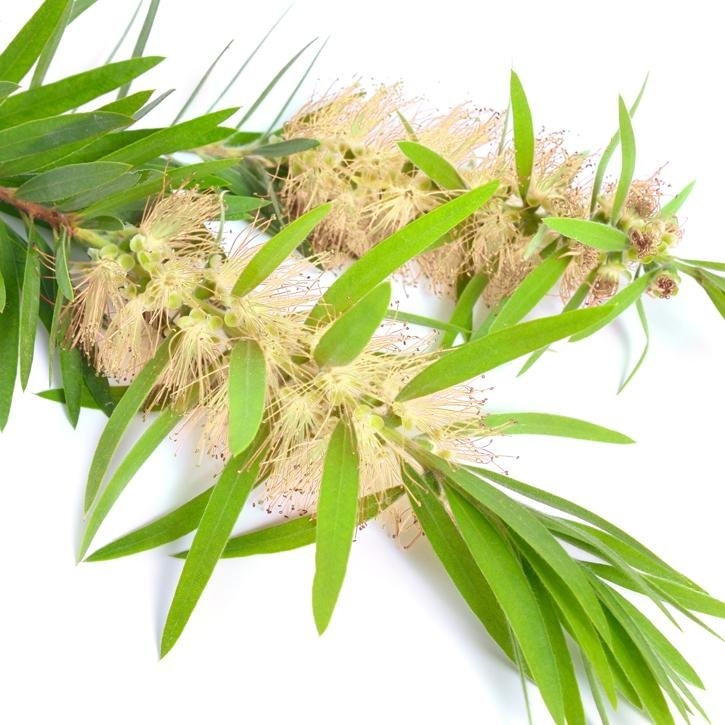A shrub or small tree of the Myrtaceae family native to Australia, it grows in swampy lands of New South Wales, where its leaves are harvested for the production of essential oil.
The leaves are narrow, linear and aromatic, 10-35 mm long and 1 mm wide. The flowers grow in spikes 3-5 cm long and are white in color. The fruit is small, woody, cup-shaped and 2-3 mm in diameter.
It should not be confused with the plant from which tea is made, Thea sinensis or Camellia sinensis L., nor with other species of the genus Melaleuca L.
Essential oil obtained by steam distillation of the leaves and terminal branches.
Essential oil, consisting of, according to the standard NF T 75-358, 1991, terpinen-4-ol (minimum 30%), γ-terpinene (10-28%) and 1,8 cineol (not more than 15%). Other constituents are α-terpinene (5-13%), α-terpineol (1.5-8%), terpinolene (1.5-5%), α-pinene (1-6%), p-cymene (0.5-2%) and aromandrene (less than 7%
No interactions have been described.
By topical route it can produce dermatitis.
Bibliographic references
-.Monografía de la SEFIT (Sociedad Española de Fitoterapia).
-.Farmacognosia. Fitoquímica. Plantas Medicinales. Jean Bruneton. Editorial Acribia S.A. 2ª edición.
-.European Medicines Agency (EMA) - Committee on Herbal Medicinal Products (HMPC). European Union herbal monograph on Melaleuca alternifolia (Maiden and Betch) Cheel, M. linariifolia Smith, M. dissitiflora F. Mueller and/or other species of Melaleuca, aetheroleum. London: EMA. Doc. Ref.: EMA/HMPC/320930/2012. Adopted: 24/11/2015.
-.Carson CF, Hammer KA, Riley TV. Melaleuca alternifolia (Tea Tree) oil: a review of antimicrobial and other medicinal properties. Clin Microbiol Rev. 2006; 19 (1): 50-62.
-.Pazyar N, Yaghoobi R, Bagherani N, Kazerouni A. A review of applications of tea tree oil in dermatology. Int J Dermatol. 2013; 52 (7): 784-90. doi: 10.1111/j.1365-4632.2012.05654.x.
-.Hammer KA, Carson CF, Riley TV, Nielsen JB. A review of the toxicity of Melaleuca alternifolia (tea tree) oil. Food Chem Toxicol. 2006; 44 (5): 616-25.
-.Casarin M, Pazinatto J, Santos RCV, Zanatta FB. Melaleuca alternifolia and its application against dental plaque and periodontal diseases: A systematic review. Phytother Res. 2018; 32 (2): 230-242.
